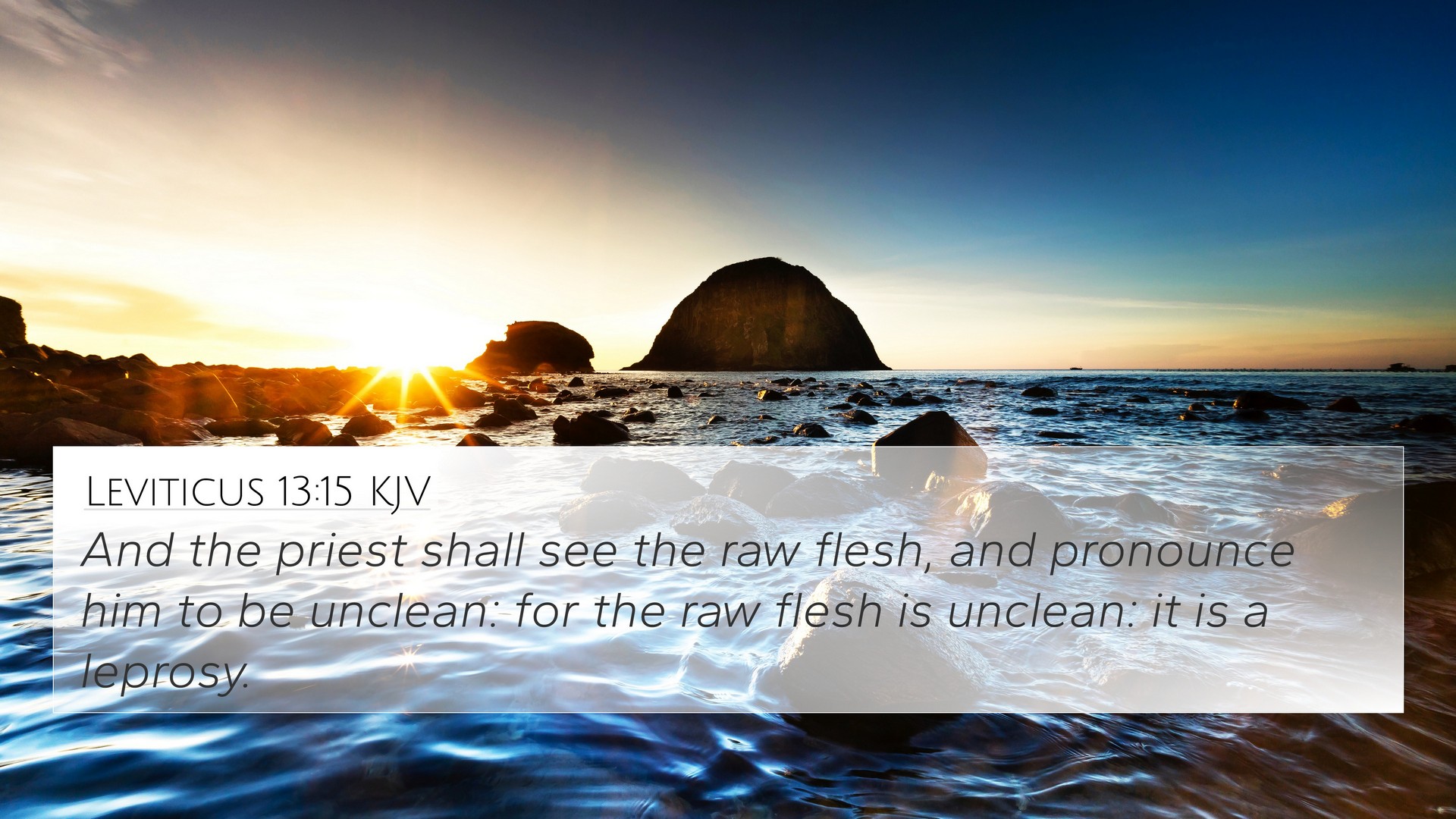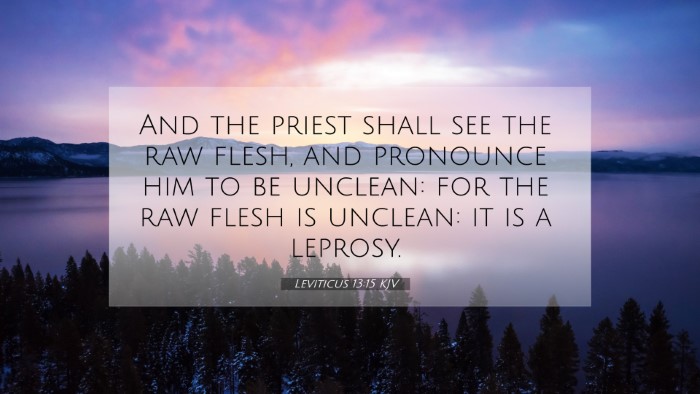Summary of Leviticus 13:15
Leviticus 13:15 provides guidance on the examination of skin conditions, specifically relating to leprosy, which has significant implications for communal health and purity in ancient Israelite society. In this context, the verse underscores the seriousness of skin diseases and the procedures that must be followed to determine one's status regarding cleanliness and disease. It serves not only a medical function but also a spiritual significane, as one’s physical health was often seen as directly related to their spiritual state.
Commentary Insights
- Matthew Henry's Commentary:
Matthew Henry explains that the laws concerning leprosy were given to maintain purity within the community. The priest's role as an examiner demonstrated the importance of spiritual leaders in guiding and instructing the people in matters of holiness and separation from defilement.
- Albert Barnes' Notes:
Barnes highlights the gravity of leprosy, viewing it not just as a physical ailment but as a symbol of sin. The verse illustrates the process of diagnosis and the subsequent implications for the individual, promoting awareness of how one’s actions may affect their standing before God and their community.
- Adam Clarke's Commentary:
Clarke expands by noting the ceremonial laws of leprosy and how they serve as an archetype for understanding spiritual uncleanness. He stresses that such diseases were viewed as actual signs from God, suggesting a deeper spiritual implication tied to moral or spiritual failure.
Bible Verse Cross-References
- Leviticus 14:1-32 - Instructions for the healing and ceremonial cleansing of those who have had leprosy.
- Numbers 12:10-15 - The story of Miriam being struck with leprosy as a consequence of speaking against Moses.
- 2 Kings 5:1-14 - The healing of Naaman, a leper, which illustrates God's power to cleanse.
- Matthew 8:2-3 - Jesus cleanses a man with leprosy, demonstrating the New Testament fulfillment of healing and restoration.
- Mark 1:40-44 - Another account of Jesus healing a leper, emphasizing His authority over sickness.
- Luke 5:12-14 - Jesus performs a healing miracle reflecting God's compassion and power to heal the unclean.
- Hebrews 13:12 - Connects the concept of the purification of sin through the sacrificial system, relating to the outcome of leprosy in the Old Testament.
Thematic Connections
This verse is rich in thematic connections, particularly the idea of purity versus impurity, the role of community health, and the underlying spiritual lessons of sin. The practice of cross-referencing biblical texts reveals how Leviticus 13:15 intertwines with both Old and New Testament teachings, reinforcing the importance of cleanliness, both physical and spiritual.
Application Through Cross-Referencing
Understanding Leviticus 13:15 within the full biblical narrative invites deeper reflection on the nature of sin and the means by which individuals can pursue spiritual cleansing and restoration, drawing parallels to personal and communal health in a contemporary context. Here, tools for Bible cross-referencing can further enrich personal study and sermon preparation, unveiling connections between disparate passages that speak to these themes.
Conclusion
Leviticus 13:15 offers profound insights into the nature of impurity, the role of spiritual leaders, and the need for care within the faith community. Through careful study and cross-referencing with related scriptures, believers can gain a fuller understanding of the biblical implications of brokenness and the redemptive process through Christ.
Recommended Tools for Bible Study
- Bible concordance for identifying related verses
- Comprehensive Bible cross-reference materials
- Guides on how to use Bible cross-references effectively


